Secret Societies, Network States, Burning Man, Zuzalu, and More: Thoughts on New Political Communities
Matt Prewitt
August 22, 2023
The sociologist Georg Simmel wrote a meaty essay in 1906 called “The Sociology of Secrecy and Secret Societies.” It is really difficult to read. The sentences are long, dense and overfull with meaning. The English translations retain the cadence of antiquated academic German.
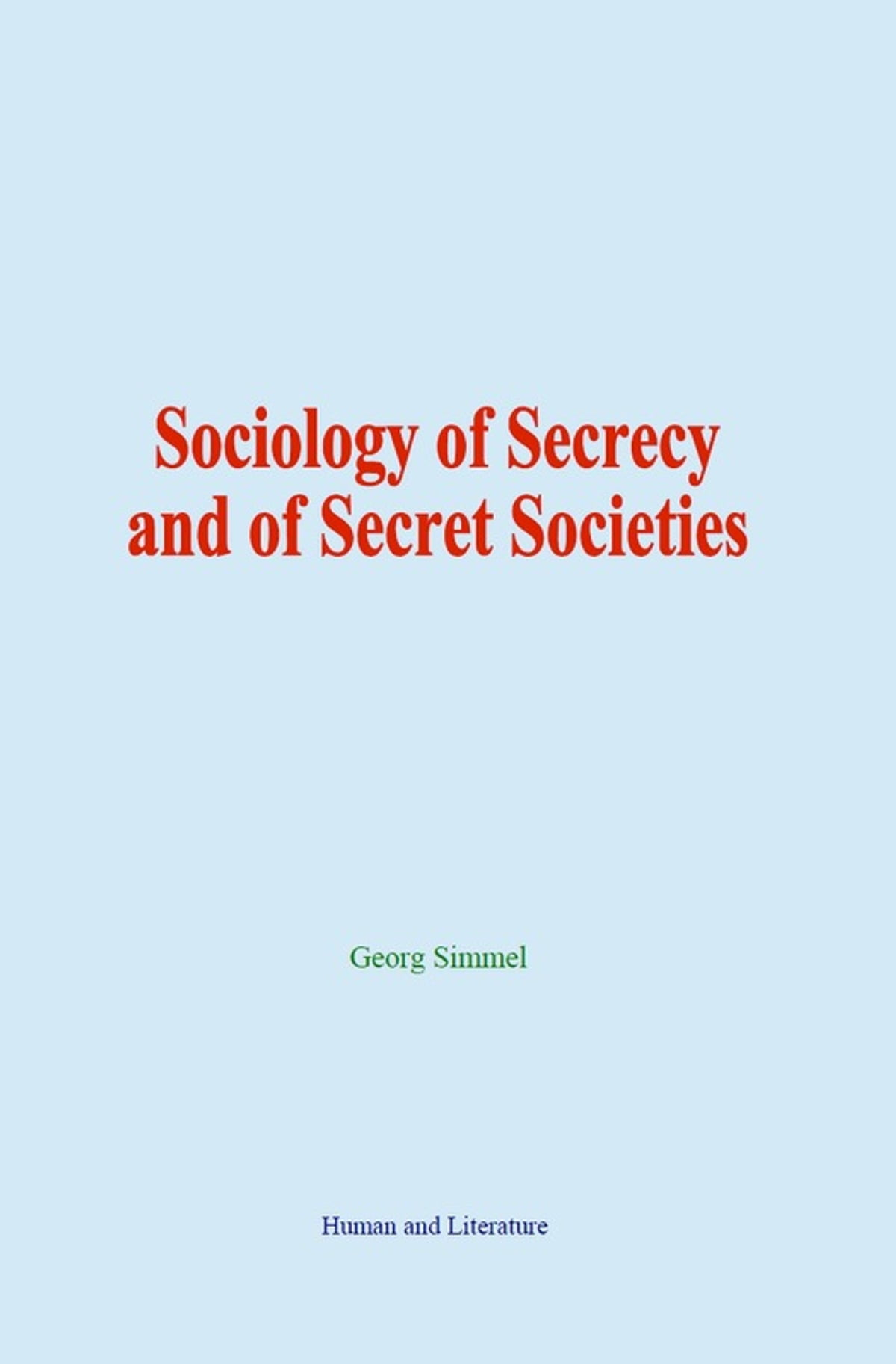
Consequently, if you read it with care, you will be joining a rather small club exposed to Simmel’s extraordinary insights about the role of secrecy in social ties, from friendships and marriages to nations. Simmel-readers are largely unaware of one another, but if any of them are reading this, I invite them to email me. A meaningful relationship might ensue because, as Simmel makes clear, knowledge shared between friends, while relatively unknown to the rest of the world, anchors many of the strongest social bonds.
In addition to private knowledge, strong communities tend to feature mutual commitments and common moral obligations, or relatedly, a sense of shared fate. Variables like commitment, obligation, and fate may seem squishy (that is, hard-to-quantify). But they do have measurable correlates, such as unsecured trust and high exit costs. We should pay more attention to these indicators. More about that later.
Recently, a wave of new-community initiatives (Zuzalu, “Network States”, Ezra Klein’s friends’ intentional communities, etc.) has gained momentum and attention. The genealogy of these impulses traces back long before Burning Man, to 20th-century back-to-the-land movements, 19th-century mystical-religious societies and cults, and beyond. What to make of these new efforts? Do they have what it takes to succeed, and would they do the world good if they did?
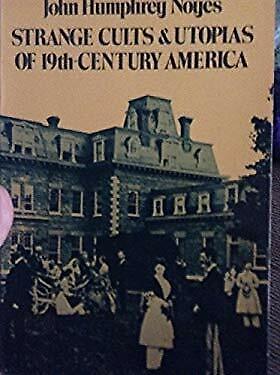
Let’s start with some taxonomizing. Most of the new movements are, like their predecessors, hard to categorize politically. They are all tweaking liberalism in one way or another, but some are conservative, while others are extremely committed to a kind of progressive liberalism. I find it useful to distinguish between three kinds of “new community” advocates. They mix often, but uneasily:
Affinity-communitarians
In the 60’s and 70’s, back-to-the-landers fed up with certain aspects of the dominant society (like capitalism and militarism) wanted to live in smaller communities where people were more like them. They have many descendants today. Their basic impulse is orthogonal to left or right: affinity communities can lean atavistic-traditional-tribal-conservative just as easily as futuristic-liberal-progressive. This makes sense because isolation promotes the revival of (real or imagined) lost traditions, as easily as it incubates new progressive or transgressive social syntheses. What defines affinity-communitarians is simply that they are attracted to the idea of a community with distinct values thriving outside the mainstream of society.
How could it possibly go wrong? Affinity-communitarian projects are only as good or as legitimate as the affinities that define them. They are hard to hold together and often fail due to internal politics: dogmatism and autocracy on the one hand, or fragmentation and discord on the other. Also, external forces frequently crush them when they enter into open antagonism with the outside world.
Individualist-escapers
Here are the libertarians, anarcho-capitalists, and billionaire bunker-builders looking to sever dependencies and transcend social obligations. In this category we see people seeking to depart the mainstream of society, but without necessarily creating any particularly coherent or definable new society.
How could it possibly go wrong? Escapist projects are legitimate only insofar as the host society, as a whole, deserves to be extracted from or escaped. Escapist projects frequently fail quietly, adding up to less than the sum of their parts due to a blind spot regarding the importance of community and sociality. Yet they can succeed quietly too, escaping notice at first by appearing not to represent a unified movement, before eventually – in the positive case – tempering oppressive communitarian tendencies in the host society; or in the negative case, weakening its bonds of social obligation and cohesion by “a thousand cuts”.
Responsible Experimenters
Over the years, plenty of responsible experimenters – think of the more pragmatic elements among the back-to-the-landers, kibbutzim, Tolstoyan farmers and so on – have managed to demonstrate that new societies can form successfully at modest scales. The best among them also managed to establish a productive and beneficial relationship with the world around them. Today, the challenge is understanding that responsible and collaborative spirit and bringing it into the digital age. There are reasons to be hopeful: Zuzalu, from what I’m told, gathered a diverse set of thinkers about new social forms – certainly not just naive escapers. Moreover in intellectual circles even avowed liberals are lately arguing for a kind of measured, economic independence from the global market. And RadicalxChange is working toward the maturity of new systems of money, property, and democracy that might support such efforts.
How could it possibly go wrong? Responsible experimentation always tries to thread a narrow needle. How does one build off-ramps from global monoculture without falling into the traps of dogmatic or exclusive affinity communities or individualist escapism? It’s hard to be both successful and good. I believe responsibility requires acknowledging this, and preferring noble projects that succeed only slightly to total blockbusters gone awry (see: Facebook, AfD).
In this short essay I’ll explore the idea of new communities.
First: how do new communities relate to the idea of social progress?
Second: Is it even possible to intentionally construct new communities in anything like the way one builds bridges and software; or must they emerge through accidental circumstance and/or historical slow-cooking? If the former, how is it done? What would it look like for them to function efficiently, resiliently, and in a responsible relationship with the rest of the world?
I’ll conclude with a few concrete proposals for responsible experimentation that flow from my analysis.
Social Progress
The idea of “social progress” occupies an odd, slightly ghettoized place in intellectual culture. The adjective “social” seems like an asterisk, signifying that we are not talking here about capital-p Progress, which is to say the scientific, technical, or material kind. Caution with the idea of social progress is understandable. It is necessitated by the lack of an agreed-upon measuring standard: we don’t all necessarily know social progress when we see it, as we do with technical progress (or for that matter pornography). Yet, this doesn’t mean social progress isn’t real. It’s just hard to agree about, like art or religion. But all the other kinds of progress ultimately sputter and backfire without it.
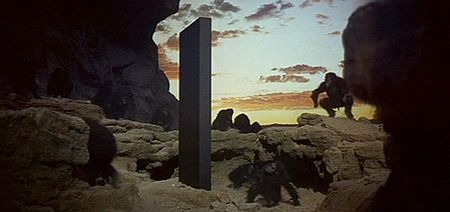
Daniel Schmachtenberger has observed that most people, when asked to name the earliest “technology”, will name one of these three: stone tools, fire, or language. These milestones represent early human manipulation of three basic elements: matter, energy, and information. But we might propose a fourth genesis of “techne” in the early stirrings of narrative storytelling and wisdom traditions – which are of course connected to religion and art.
These techniques were vital to the development of human cooperation. Perhaps language without story suffices for certain simple commands and rudimentary practical descriptions. But consider the listener as well as the speaker: deep listening and faithful interpretation of others’ words tends to coincide with a backdrop of shared morality, or law, or a sense of the sacred. It was storytelling and art, and their coalescence into wisdom traditions and religions that inaugurated expanded social coherence, shared values, and the sense of an expanded, cooperative “we”.[1]
I digress but the main point is simple: the drivers of social coherence, such as culture, governance, morality, law, shared stories, and shared values might as well be considered “technologies”. These stories, at least as much as our manipulations of fire, matter, and information, sustain our relationships with one another and with the planet. Their status registers how well we are doing, at least as meaningfully as the potency of our machines.
In fact progress in any particular domain of technology (i.e., the manipulation of matter, energy, or information) must ultimately be measured in terms of another. For example, we know that our stone tools (matter) are “working” when we strike flint with them to make fire (energy). We know that our fires are working when they turn engines that help us lift heavy stones (matter). We know our computers (information) are working when they make predictions that give us more material or energetic resources.
But if culture, governance, law, values, etc. were thought of as technologies, they too might be recognized as a yardstick by which progress in other technical domains must be measured. We sorely need this added point of reference to guide our manipulations of matter, energy, and information.
And this context helps clarify what is at stake in efforts to create new communities. In looking for a new community – that is, a clearer or better story – people are practicing a technique that should be appreciated and supported just as fervently as our other technological endeavors. Without progress in our techniques of deepening and expanding community, all other technical progress will evolve without reason or direction, eventually snagging on internal and external contradictions. Bluntly, we’ll harm ourselves and our environment.
In the rest of this essay I will describe a few “patterns” that I believe are important to understanding what makes communities work and not work. Countless misbegotten utopias have wrecked themselves by misunderstanding these and other things. We have lots to learn from the past here.
A “Pattern Language” About What Connects Communities
In the 1970’s a group of architects wrote a really good book called “A Pattern Language”. It describes little features of buildings and cities – things like “the transitional space in front of a doorway”, or “the pattern of window woodwork that casts an interesting shadow on a hallway at a certain time of day”. Together, these ideas have helped many architects build nice, warm, functional spaces.
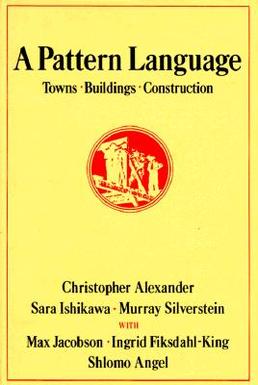
The idea of a pattern language is that it lets you describe a system that is much too complex to describe with any overarching theory. All you can do is make little observations in the hopes that others can cobble them together usefully. In that spirit I share some observations about what makes communities coherent and attractive.
- Associative Obligations and Shared Fate
It is not true that communities form entirely through choice. For example we do not choose our families, or any of the circumstances of our birth, yet these circumstances place us within certain communities. Communities often welcome us, or count us as a member, without any action or even endorsement on our part. And sometimes, these non-voluntary associations and unrequested memberships generate real moral obligations even though we haven’t asked for them.
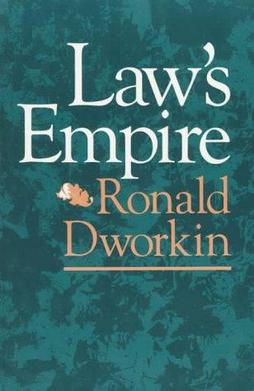
Many people are hesitant to accept the idea of these kinds of obligations, at least in the abstract, for understandable reasons. Certain obvious examples of involuntary associations are definitely problematic. Racists, for example, may unilaterally welcome certain people into their community just because they look a certain way or have ancestry from a certain place. Does this mean that those people owe some kind of loyalty or other duty to the racists? Definitely not. Many other examples of involuntary association, although more innocuous than that one, are simply incoherent: If someone tells you that there is a society of people with your birthday, and then asserts that you’re a part of it, does that obligate you to the group in any way? Again, definitely not. You have no meaningful connection with people who happen to share your birthday.
But this is not because obligations must always follow some kind of quasi-contractual “offer and acceptance” pattern. A much more satisfying explanation is that some communities – like “white people” or “people born on December 15” – simply do not constitute meaningful communities. The stories around which they are organized are, basically, clunkers: logically incoherent, or morally compromised or both. Consequently, they are incapable of grounding non-voluntary associative obligations.
But many other associative groupings are not completely incoherent or morally compromised: their stories hang together, to a certain degree. And if we deny the possibility of all involuntary associative obligations we deny the reality of many political and social communities.
For example, suppose someone treats you well because you are their cousin, neighbor, coworker, co-religionist, fellow union-member, teammate, or even fellow human being. Within the relevant domain, and to a reasonable extent, you may be obligated to reciprocate that special treatment – and even, perhaps, to honor the category on the basis of which you are being included. Your actions will of course greatly affect whether the associative bond subsequently deepens or weakens, and these actions have ethical consequences. But the bond is initiated to some degree without you signing any contract, or making any affirmation at all.
Communities deepen when people extend each other special treatment. When that special treatment is offered on the basis of a good story – a logically meaningful and morally attractive connection – reciprocating it is an essential part of social life. This is not a mechanically contractual process. We do not fully control our community memberships – and that is okay.
- Deweyan Publics
John Dewey viewed “publics” or political communities as things that form in response to common problems. For example, if a factory opens up in a town and starts polluting it, the shared problem of pollution management calls into being a “public” to grapple with the issue.
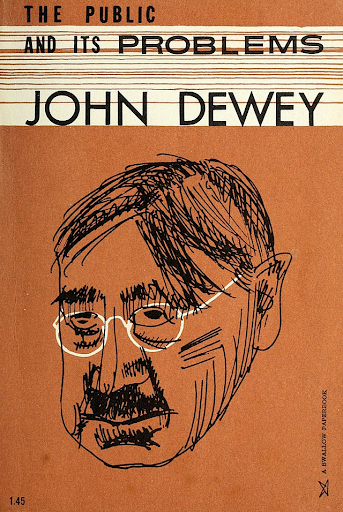
He understood that in the modern world, with the hyper-complex problems brought on by industrialization, the political community faces great difficulty recognizing itself. Its problems are often too diffuse or abstract to easily organize against. However, the work of building a democratic society is to disseminate enough information and education for the public to be able to discern itself. Information about the public’s problems must therefore be broadly available, and yet local face-to-face interactions must play a crucial role in organizing a society to countervail them.
- Secrecy and Trust
Communities frequently form around shared secrets – in other words, special knowledge. The knowledge may be cultural, linguistic, scientific, religious, or anything else. The community defines itself by the way it uses and guards that knowledge.
A community’s special knowledge may be a secret language that lets it communicate efficiently and distinctively within itself. Or perhaps a religious teaching, like the sacred songs that Druid initiates had to spend years memorizing. It may even be mutual blackmail: members of a criminal syndicate are bound to one another by the fact that any one of them could ruin all the rest by disclosing what they know.
When the special knowledge of a community is externalized, or affixed in a public object like a text, its social texture is weakened. Illustrating this, Simmel claims that the Druids were prohibited from writing down the sacred songs because if the songs had been affixed in public texts, the younger initiates would have lost their dependence on the elders for religious instruction, thus undermining the intimate sociality inherent to the wisdom tradition. Renowned anthropologist Ted Strehlow remains controversial for having published certain Aboriginal songs and materials that were intended to be guarded as cultural secrets. Today, Wikipedia and ChatGPT attenuate the bonds between teacher and student: the teacher, no longer enjoying a special monopoly on information or even the ability to convey it, appears to the student less as a teacher than as a taskmaster.
In strong or intimate private relationships, parties frequently assume confidentiality and make important agreements based solely on unsecured trust. By contrast in public life, confidentiality is rarely assumed and assurances are generally demanded. Demands of transparency reveal the public’s presumption of ill intentions by those in power: transparency is designed to break up the proverbial “smoke-filled rooms” in which secrets may flow between the powerful, so that those secrets do not cause the emergence of “sub-communities” liable to work at odds with the wider polis.
To a considerable degree, the strength of the informational barrier between a community and its surrounding context indicates the extent to which that community really amounts to a coherent community, as distinct from its surrounding context. One even sees this pattern on the level of an individual: a person whose thoughts could be thoroughly read from the outside would be for that reason completely manipulable, and therefore potentially devoid of either autonomy or responsibility for their actions.
This pattern has important implications for the interaction between community formation and cryptographic techniques including public blockchains, zero-knowledge proofs and other privacy enhancing technologies, and designated verifier signatures.
- Exit Costs
As I outlined above, associative obligations may sometimes arise unilaterally or involuntarily. But it is true that they reach full flower only when people reciprocate special treatment of one another over time, creating deeply entangled, morally significant relationships.
Consider a warm relationship with an acquaintance. When does it become a “friendship”? Is it the second time a call is returned, or the fifth year that family holidays are spent together? Surely somewhere in between, but there is no clear line. Every friendly act simply deepens the relationship. One becomes gradually conscious of the possible obligations that the deepening relationship entails. And here is the point: one is always more likely to accept those obligations if the “costs” of abandoning the relationship are higher.
The deepest relationships and strongest communities are therefore often forged in necessity. If two villagers have no choice but to cooperate closely to survive a famine, a deep friendship between them is more likely to develop compared to conditions where they could easily avoid each other. National communities harden in war. Etc.
Commercial conditions have analogous effects. Where borders are wide open and capital moves frictionlessly, trusting commercial relationships are less likely to form. People have less reason to invest in relationships where their welfare depends on them less.
Low “exit costs” make it harder for communities to deepen and mature.
- Mutual Vulnerability
Arguably, all the patterns above illustrate a general theme: mutual vulnerability. Through meaningful relationships, shared secrets, common problems, and intimate associations, people become vulnerable to the possibility of being harmed by those close to them.
Vulnerability illustrates how social coherence can be a double-edged sword. If we tried to isolate mutual vulnerability as a variable in social organization and “optimize” for it or scale it up, we may indeed increase coherence, but we would probably also risk greater brittleness or fragility.
It may be useful to distinguish between different patterns of mutual vulnerability. For example, vulnerability may be symmetric or asymmetric; one-to-many, all-to-all, or some-to-some. It may even be circular, for example, where A is vulnerable to B who is vulnerable to C who is vulnerable to A.
All of these patterns warrant further study. The role of mutual vulnerability in cohering groups seems quite important. For example, a culture of respect for shared norms may be encouraged when it is clear to everyone that anyone’s disrespect of such norms will result in a disaster for everyone.
Experiments: Seeding Relationships With Unsecured Trust
These patterns help explain why the intensification of basic information technologies can weaken communities. Open networks of money and information reduce the importance of local associations, frustrate secrecy, attenuate mutual vulnerability, and facilitate exit from community. This is the atomization that sociologists like Simmel have studied since the industrial revolution. The problem has not diminished but intensified, and there is no reason to think the trend will break.
I worry about this, and that is why I find new community initiatives interesting and important. Still, they cannot repeat past mistakes. They should absorb the lessons of past failures with the ardor of technologists building atop past successes.
The patterns outlined above suggest certain directions of travel for “responsible experimenters” interested in improving our techniques of community-building. In that spirit, here are two concrete experiments that strike me as plausible and interesting.
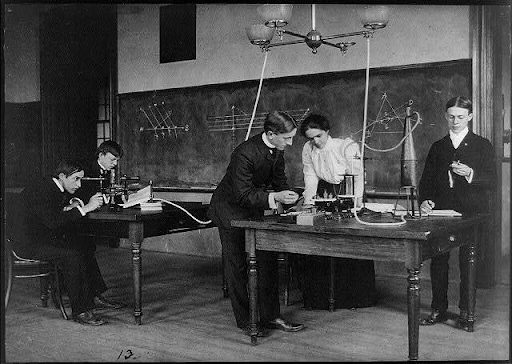
-
Unsecured trust networks. Blockchains have promised to scale cooperation by rendering trust obsolete. But what if this is exactly backwards? Could we instead devise ways of encouraging more profound trust, and leveraging that? Consider a society intentionally structured around trust and mutual financial vulnerability, roughly as follows.
-
Several people place an amount money in a shared account. They each have the guaranteed ability to personally withdraw and claim the entire sum (i.e., not just their own deposit). Nothing will be done to stop them, and no legal recourse being taken against them after the fact. Still, they all have a clear understanding that this would be a grave violation of trust. (They may, of course, share clear understandings or even formal internal rules, making clear what the group’s norms permit. The key is that they all understand this to be unenforceable on a legal level.)
-
This community could then manage its shared wealth collectively – for example investing it in equities, real estate, etc. – and split the proceeds. (Even the shared non-cash assets should be made vulnerable to being taken by any individual in the group; e.g., any member should have the ability to legally claim the community’s investments as their personal property.)
-
Further, the community could issue an internal currency corresponding to the amount of conventional money or assets each member had contributed to the group.
-
This internal currency might be “spent” by group members on quadratic votes over the management and use of the shared assets.
-
Additionally and more importantly, the internal money could be (1) exchanged for services with other members of the society (including exchanges for the use of community assets through partial common ownership, along the lines of the “plural money” system); or (2) exchanged with outsiders for regular money, at the cost of a community-determined “exit tax”. (Non-community members holding the currency after such exchanges would be able to use it to purchase services, but could not vote with it.)
-
-
Because of the mutual vulnerability underlying this system – anyone can easily screw everyone – the internal economy would likely be uniquely efficient and cooperative. Few participants, I suspect, would bother to drive hard bargains or cheat in their dealings with each other. If they really wanted to do any of those things, they could just directly abscond with the community’s assets. Moreover, dishonest dealings would increase the risk of others retaliating by absconding with the group’s assets. In short, everyone would have a stake in no one being too deeply disgruntled. The surplus value created by the community currency and internal economy would be enhanced (perhaps even superlinearly) by the community’s mutual trust.
-
Systems like this could conceivably create wealth in a way that is akin, but perhaps strongly preferable, to fractional reserve lending. After all, bank loans also create new money through trust or “credit”. But here, instead of relying on bankers to extend credit through arms-length debt transactions, the community would have the option of issuing additional community currency against its own shared assets, while keeping them beneficially invested. Communities could thus mint new wealth whose value would correspond to the degree of trust, respect, and cooperation within the group. Communities that took seriously their duty to contribute to the internal economy would see the value of their special currencies appreciate in dollar terms.
-
The size of these communities could be increased gradually and carefully. They might start between just a few people who knew each other well, with new members admitted judiciously, one at a time. Alternatively or in addition, they could set “caps” on the amount of shared funds that each member could unilaterally “steal”, thus permitting a different pathway of scaling. E.g., each member might be able to abscond with 2x, 5x, or 10x what they put in, but no more. This way you could create larger groups without requiring everyone to place excessive trust in the weakest link. Such larger groups could “deepen” by carefully increasing the amount members were able to “steal” (reflecting deeper, rather than broader trust).
-
This leaves many questions. A community built this way would not automatically exhibit all the associative patterns I outlined above. Cultural common ground beyond mutual financial vulnerability might be needed for the community to thrive. There are also important questions about how to handle “runs on the treasury” which would, as in any financial system, surely happen from time to time. Still, this kind of intentional entwining of interests might unlock new possibilities for deepening community and increasing social and financial safety.
Also interesting is that the rich have no advantage over the poor in willingness to trust one another without assurances. In fact, I suspect the opposite: the wealthy are less capable of being materially vulnerable because they literally cannot accomplish it without, well, becoming less wealthy. There is thus a hopeful possibility that these systems might serve as equalizers, with poorer communities being better than rich ones at leveraging mutual vulnerability.
Here’s another, slightly less definite idea for experimentation. (I suspect there are things like this out there already and I’d love to learn more about them):
-
Circular Formal Authority Structures. Circular formal authority structures are an underexplored pattern that might help reestablish informal norms in cultural contexts where they have otherwise eroded.
-
Consider an authority structure with the form A→B→C→A. This is related to the general notion of “checks and balances” but more specific: We are not talking here about omnidirectional influence or a multiparty veto, but a system where each actor’s actions can be rewarded or censured by another in a ring. Picture a three member team, sitting around a table, working on a common project. Each member decides the salary of the person to their left.
-
Because it’s a bit like a “house of cards”, the efficacy of a circular authority structure is clearly dependent on whatever informal norms develop between the members. For this reason, informal norms might have an unusually good opportunity to develop and gain force. All the actors in the system might work hard to develop reasonable shared norms and take them seriously.
-
The reason this is interesting to me is that informal norms usually tend to have real force only in systems that feature either (a) a deep shared history, or (b) a strong authoritarian bent, or both. Yet informal norms are wildly important, and decreasing respect for them seems to plague many institutions in democratic societies today. That’s why experimentation with circular authority structures feels like an interesting way to rebuild them in the absence of (a) or (b).
-
Conclusion
Building new communities is hard. Doing it in a way that is responsible, honest, and productive for participants and the broader society is even harder.
But I don’t see how we can avoid undertaking this work. Our techniques for constructing social cohesion lag severely behind our technologies of material, energy, and informational manipulation. Thus, either we’re going to smash the machines (unlikely), or the machines are going to degrade society (worryingly possible), or we need to get better at intentionally strengthening society.
I’ve proposed a few ideas that I think warrant pilots. If you agree, reach out and help make it happen.
*Major thanks to Paula Berman, Jack Henderson, Angela Corpus, Alex Randaccio, and Christopher Kulendran Thomas for feedback, conversations and ideas that contributed to this piece.
Notes
If those three things correspond to three classical elements – earth, fire, and air – what of the fourth? Indulge me by thinking of narrativization as the manipulation of “water”. This is a generative metaphor: Water brings coherence and renewal, and sustains life. It protects the earth - the body that unites and sustains us, and for which we are responsible – from the sun’s energetic assault. It does this by changing phases readily, thus dampening excesses of energy. Counterintuitively, water orders itself when energy is removed from it, not when it is added. As vapor cools, it first condenses into liquid, then crystallizes into ice. It thus constantly prepares to repeat its protective role. It holds the other elements in harmony. ↩︎